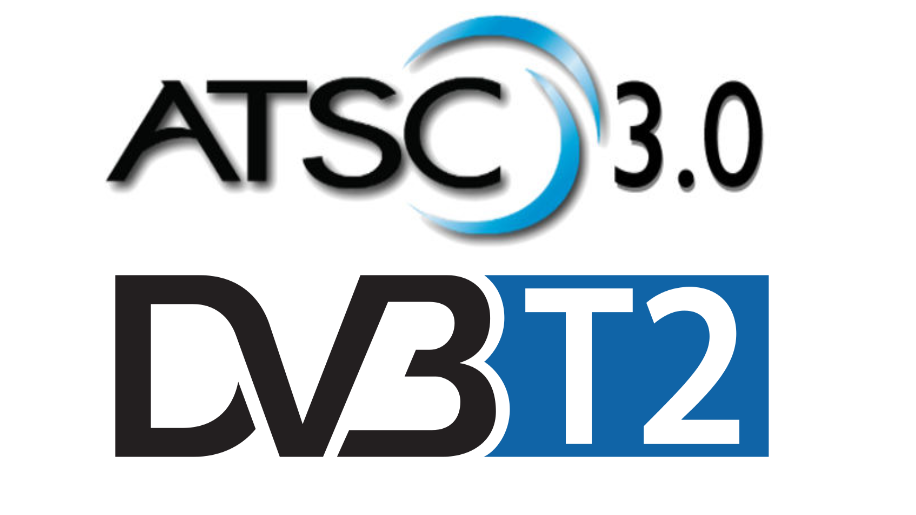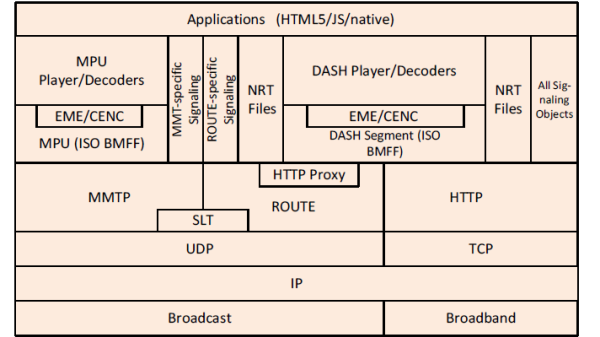How DVB-T2 and ATSC 3.0 Stack Up: Technical Benefits, Limitations and Real-World Deployments
When the DVB-T2 standard was published in 2009, it was the first—and for awhile the only—second-generation Digital Terrestrial Television (DTT) standard. Because of its superior spectral efficiency and its operational flexibility, DVB-T2 has successfully been deployed around the world and is the technology of choice in many countries. Now, with ATSC 3.0 deployments underway, there is another second-generation DTT specification.

This article will explore the relevant differences between ATSC 3.0 and DVB-T2, starting with a comprehensive comparison of the physical and transport layers of each standard. Next, the article will evaluate the audio and video coding technologies that the systems support, noting the advantages of each approach with regards to equipment costs and licensing fees. With the growing popularity of smart and connected TVs and widespread broadband access, the article will conclude with a look at how ATSC 3.0 and DVB-T2 approach interactive service delivery and why the latter standard remains the strongest candidate for implementation of DTT services.
COMPARING THE PHYSICAL LAYERS
Only marginal differences for the spectral efficiency of a single channel exist between the physical layers of ATSC 3.0 and DVB-T2. The physical layer of ATSC 3.0 was built upon the same basic architecture as DVB-T2, which features OFDM and LDPC Forward Error Correction Codes. While ATSC 3.0 does include additional new tools such as non-uniform constellations and advanced LDPC codes, it only offers a slight improvement in performance that doesn’t outweigh the increased complexity.
There are additional new tools in ATSC 3.0, like MIMO (Multiple-Input and Multiple-Output) and LDM (Layer Division Multiplexing). DVB analysed the benefits of MIMO some years ago and made a deliberate decision not to include it in DVB-T2, owing to a lack of commercial demand for it. DTT operators expressed concern about the more complex and expensive network infrastructure its introduction would require. Furthermore, the introduction of MIMO forces the end user to install a new receive antenna.
LDM can provide spectral efficiency improvements for a limited choice of injection levels. The right mix of different injection levels is not always a typical use case and limits the use of LDM, which also adds complexity and cost to the receivers.
From a modulation perspective, ATSC 3.0 can operate up to 1024 and 4096 QAM, compared with DVB-T2 where the highest option is 256 QAM. The higher modulation scheme of ATSC 3.0 allows for more bits per symbol but it also introduces a higher signal-to-noise ratio, requiring a denser and thus more costly network. Currently, there is no market demand for constellations beyond 256 QAM in Europe. Indeed, the Recommended Practice for ATSC 3.0 television sets, issued by the CTA, mandates only constellations up to 256 QAM, indicating a similar market need in North America.
EXAMINING THE TRANSPORT LAYER
The transport layer of ATSC 3.0 moves away from MPEG2 Transport Stream (TS), which is well established in the industry. Instead it relies on an IP system based on the DASH Route and MMT specifications (Fig. 1). DVB, on the other hand, maintains that MPEG2-TS continues to be the best technical solution for unidirectional distribution of broadcast content, including terrestrial, satellite and cable.

By using MPEG2-TS, broadcasters can create a TS signal once and use it for a variety of different delivery platforms. Moreover, MPEG2-TS was developed specifically for broadcast. ATSC 3.0 relies on IP protocols, which may be advantageous in interactive use cases. Recognizing this, DVB, too, has several specifications intended for IP-based transport.
A LOOK AT AV CODING TECHNOLOGIES
For advanced video coding, ATSC 3.0 solely relies on HEVC, while DVB-T2 offers the flexibility to use HEVC or MPEG-4/H.264, lowering equipment cost thanks to minimal patent licensing fees. Both ATSC 3.0 and DVB-T2 allow broadcasters to deliver all video resolutions, from SD to UHD (4K), along with providing advanced features like High Dynamic Range, High Frame Rate, Wide Color Gamut and Next Generation Audio to enhance the viewers’ experience.
For subtitles, both ATSC and DVB use XML based solutions. DVB also has a widely implemented solution for bitmap-based subtitle delivery, which remains the preferred approach globally today.
CONTENT PROTECTION DIFFERENCES
Content protection is a key requirement today, especially for premium content like live sports and movies. A major difference between ATSC 3.0 and DVB-T2 is the method of content protection used. ATSC 3.0 relies on the MPEG Common Encryption (MPEG-CENC) scheme. It’s a perfect solution for delivering video protected by DRM over a broadband network to connected devices. The drawback: it is not specified for a broadcast-only environment, meaning most pay-TV use cases are left in the dark.
Conditional access (CA) is the heart of DVB-T2 content security, with support for Simulcrypt. This approach allows broadcasters to use different CA solutions. In addition, DVB also supports Multicrypt where all CA related functionality is implemented in one CA Module, separating the TV functions from the CA functionality. To make this approach work, DVB has specified the Common Interface (CI) between the TV set and the CA Module. This Interface is mandated in the European Union.
Overall the DVB CA approach is very successful; about 50% of all DVB receivers worldwide are used for pay TV.
INTERACTIVE SERVICE CAPABILITIES
According to Strategy Analytics, there are 1 billion connected TVs in homes globally. Given the nature of smart devices in use, today’s television viewers expect an interactive experience, with access to broadband and video content. Both ATSC and DVB-T2 (via HbbTV) support interactive service delivery. The major difference is that HbbTV has been established across Europe and other parts of the world, whereas ATSC 3.0 is still rather new. While trials are underway, it does not yet have an ecosystem for interactive applications and services.
In today’s connected world, interoperability is important. HbbTV provides a test suite so that devices, and suppliers of hardware and software components, can confirm compliance with HbbTV specifications. Having a test suite is an absolute must for delivering compliant and interoperable solutions.
CONCLUSION
ATSC 3.0 and DVB-T2 are both state-of-the-art digital television systems with advanced features like interactivity. The main technical differences lie in the transport mechanisms (IP for ATSC 3.0 vs. MPEG2-TS for DVB-T2) and content protection schemes (MPEG-CENC for ATSC 3.0 and CA/Simulcrypt/Multicrypt for DVB-T2) used. Ultimately, DVB-T2 has successfully been deployed by multiple countries across Europe, serving a combined population of more than 3.5 billion, meaning it has an established and proven ecosystem. Moreover, DVB-T2 is closely aligned with the wider set of DVB standards, supporting satellite, cable, IP and terrestrial delivery, whereas ATSC 3.0 only covers terrestrial use cases, limiting its appeal for those looking to implement digital television services.
Peter Siebert is the head of technology at DVB.
For a comprehensive source of TV Technology’s ATSC 3.0 coverage, see ourATSC3 silo.
Get the TV Tech Newsletter
The professional video industry's #1 source for news, trends and product and tech information. Sign up below.
